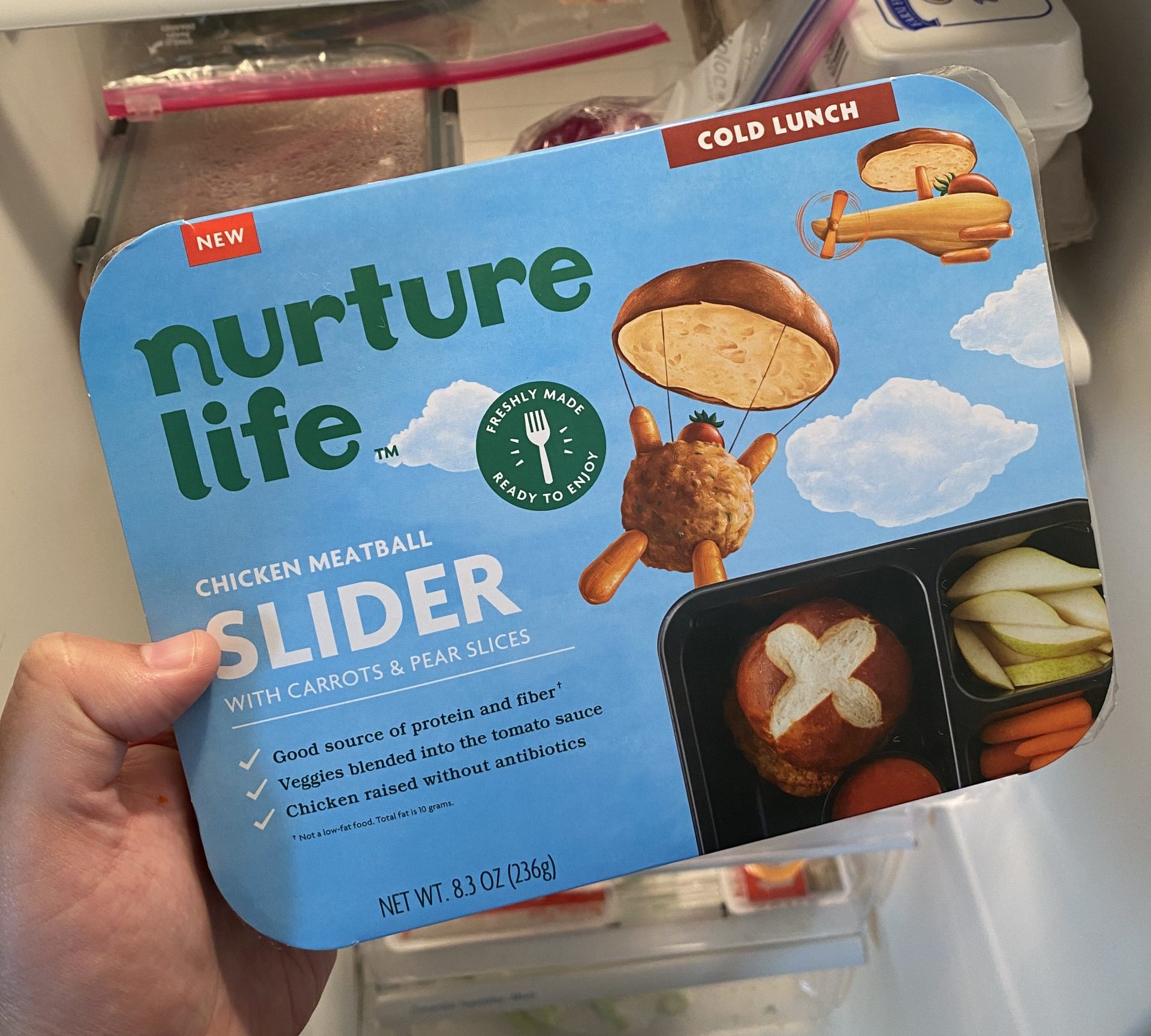For too long, parents in the United States have been forced into a very subpar choice when looking for prepared meals: between food that’s convenient and food that’s healthy.
Whether it’s on grocery store shelves or restaurant menus, the food industry has been all too eager to feed kids exactly what they want—which, unfortunately, tends toward heaping plates of food that are all one color, all the same texture, often deep fried, with no fresh produce in sight.
But truthfully, kids don’t have to want these kinds of foods!
We’ve all been primed to believe that kids’ meals have to be a certain thing, and many children have had limited exposure to whole foods that are real, clean and naturally delicious (meaning minimally processed, without preservatives and without copious amounts of added sugar and salt).
It’s not kids’ fault for craving greasy pizza pockets or deep-fried chicken nuggets, and with so few healthy yet kid-friendly options available, parents really aren’t to blame either for resorting to these kinds of meals. As parents, we’re all doing the best we can with what we have available—which is why we thought, “Why not change what’s available?”
Nurture Life claims to deliver: nutrient-dense, well-balanced, delicious meals that are based on nutritional research and appropriately portioned for the developmental needs of every age group.
We reviewed Nurture Life based on 5 Nutrition Standards
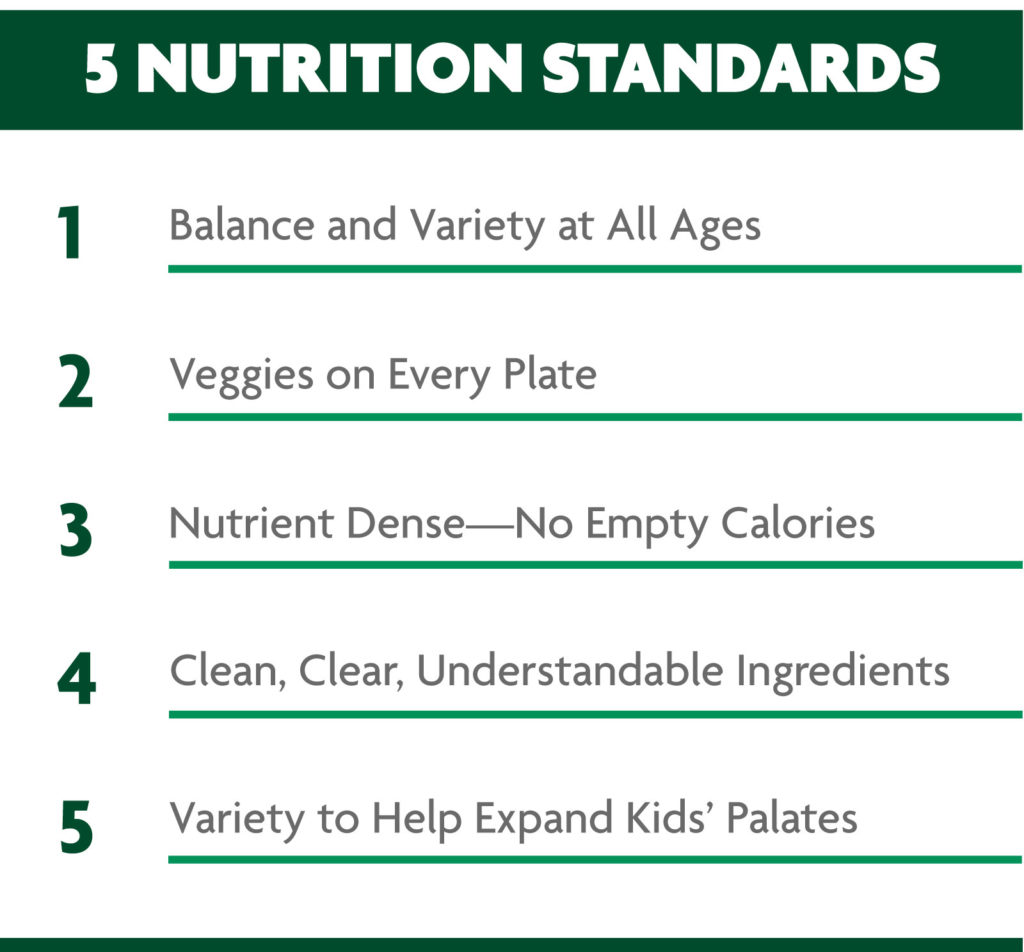
Quick Read: Nurture Life delivers on their promise of healthy, nutrient rich meals for kids. You can save 25% by using code: KIDSMEAL25 at checkout.
Nutrition Standard #1: Balance and Variety at All Ages
Nurture Life’s Baby, Toddler, Kid and Teen & Adult Meals are developed by registered dietitians and chefs based on what’s needed at each age and stage of development.
In each of their meals, they aim for a mix of colors, textures, flavors and, most importantly, food groups—all informed by the latest nutrition research. Every meal is designed for its age group’s growth and developmental needs and recommended portion sizes.
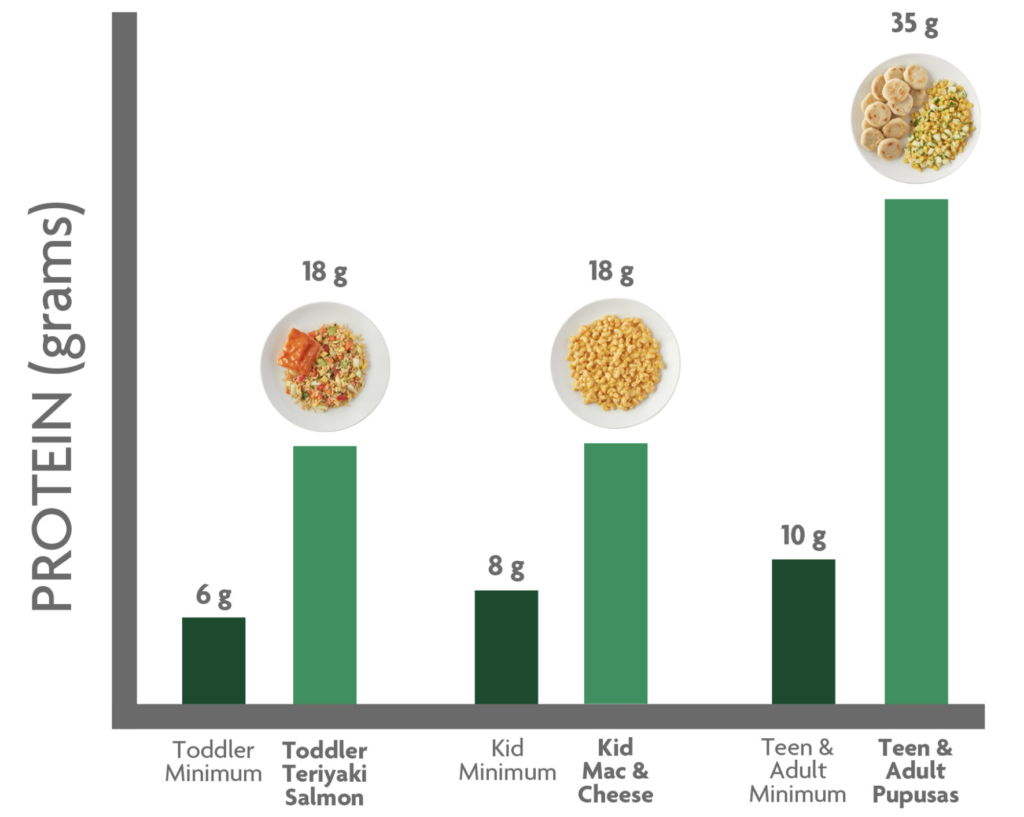
Nutrition Standard 2: Veggies on Every Plate
Isn’t it strange how most foods that are marketed toward kids have no veggies at all? And if there is a veggie, it might be a paltry piece of celery served with sweetened peanut butter spread, or maybe a few pieces of broccoli covered in a shelf-stable cheese product. Studies have shown the effects of this lack of veggies in kids food products. According to Nestle FITS (Feeding Infants and Toddlers Study), 27% of young kids do not consume a single discrete serving of vegetables on any given day, and among those who do, french fries are the number one “vegetable” consumed. It’s disheartening that the veggie bar has been set so low!
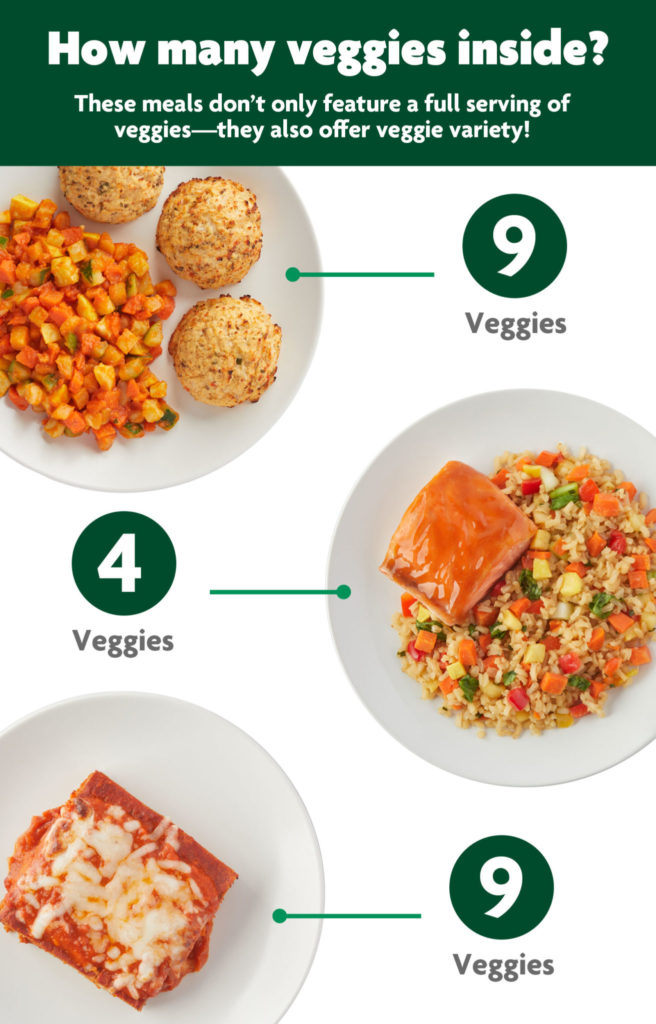
There’s a full serving of vegetables in every Toddler, Kid, and Teen & Adult Meal Nurture Life offers with the exception of Pesto & Cheese Ravioli, although does include spinach in the sauce.
Nutrition Standard 3: Nutrient Dense—No Empty Calories
Because so many food brands assume that kids won’t eat veggies, they typically don’t include them in kids meals. Instead, many kids meals include “empty calories,” or calorie components that do not provide much nutrient value. These calories often provide a temporary feeling of fullness or satisfaction, but they don’t provide the nutrients needed to power your kids’ minds and bodies throughout the day.
With Nurture Life meals, there is a purpose for absolutely everything on your family’s plates. The items chosen for each meal have the specific macronutrients and micronutrients required for children’s physical and mental development.
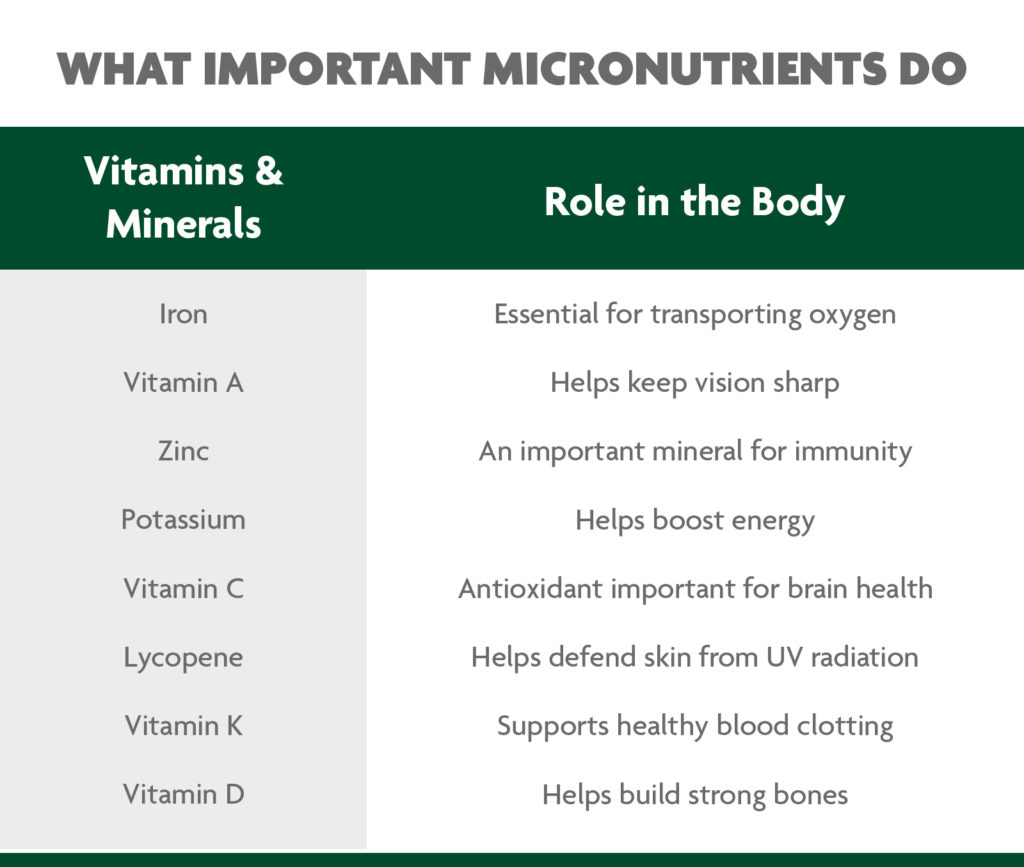
Do Calories Even Matter?
Yes and no. The same 600 calories could mean a well-balanced meal of proteins and veggies, or it could mean a plate of cheese fries. Instead of calories, it is important to focus on the nutrient value of the food.
That being said, we’re pointing out calories here because they do, in general, say something important about Nurture Life’s meals. Compared to most kids meals on the market, Nurture Life meals are much higher in protein and fiber, more nutrient-dense and filling for the same or even fewer number of calories.
Let’s Compare A Nurture Life Cold Lunch To The Brand Standard Comparable.
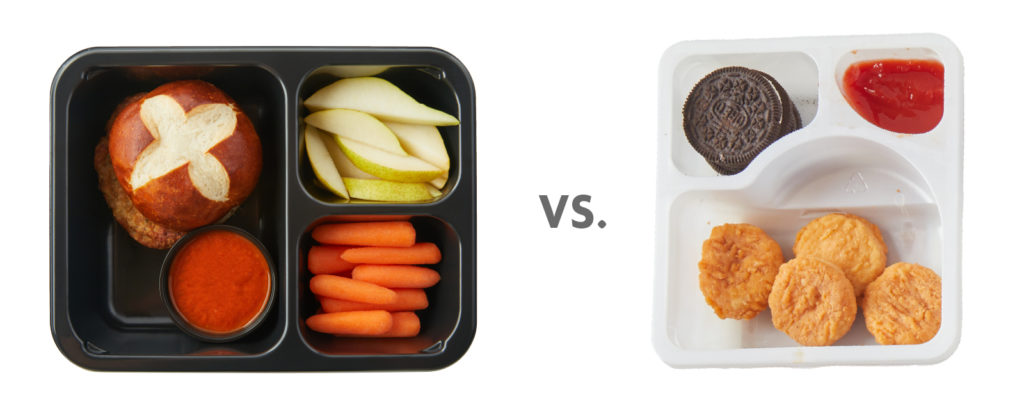
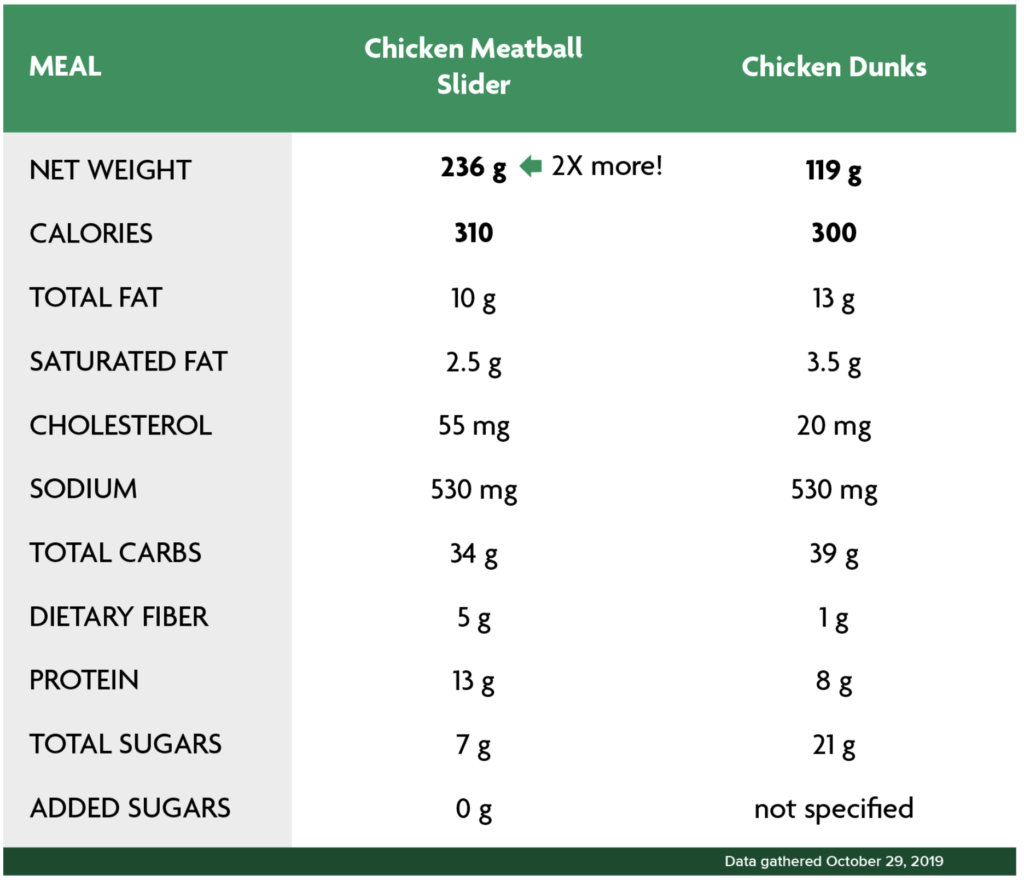
At just 40 calories more, Nurture Life’s Chicken Meatball Slider is twice as large and has 7x the dietary fiber, 2x the protein and just about ⅓ of the total sugars.
Because Nurture Life’s carefully selects ingredients, your kids’ lunch or dinner serves as a hearty, nutritious meal, not a light snack that leaves them wanting more.
Nutrition Standard #4: Clean, Clear, Understandable Ingredients
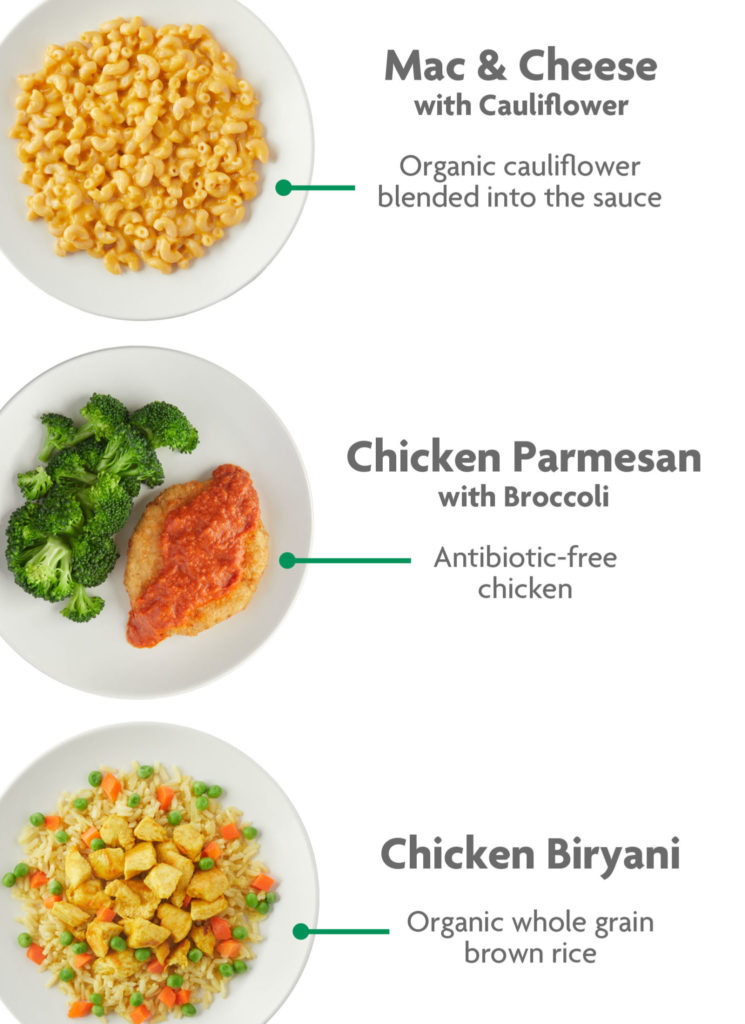
As a parent, you should know what you’re feeding your kids, especially if your little one has food allergies or dietary intolerances. Nurture Life makes transparency a core part of their kids meals, with complete nutrition facts and ingredient lists available before you order any meal.
Meals are prepared in their own nut-free facility to eliminate the risk of cross contamination from peanuts or tree nuts (except coconut).
With dietary and allergen filters, Nurture Life makes it easy to remove meals containing ingredients that your child may be sensitive to.
Each meal also contains dietary tags so you can easily check to see if a meal will work for your family’s preferences:
- Milk free
- Egg free
- Gluten free
- Fish free
- Sesame free
- Coconut free
- Pork free
- Vegetarian
Nutrition Standard #5: Variety to Help Expand Kids’ Palates
It may feel as though kids just like what they like and there’s nothing we can do about it, but extensive scientific research shows that this common belief simply isn’t true. Kids can learn to like foods, even picky eaters!
The key is to provide consistent exposure (research says anywhere from 6 to 15 times) to different tastes, textures, ingredients, colors and preparation methods—a scientific approach that can be described as “taste bud rehab,” developed and used by Dr. David Katz, the founding director of Yale University’s Yale-Griffin Prevention Research Center.
Nurture Life pushes the boundaries—just a little bit for even the pickiest eaters, and more for adventurous eaters—to expand your child’s palate in a natural, non-threatening way. With every meal, Nurture Life strives for that “taste bud rehab” sweet spot of creative yet approachable, familiar yet unexpected.
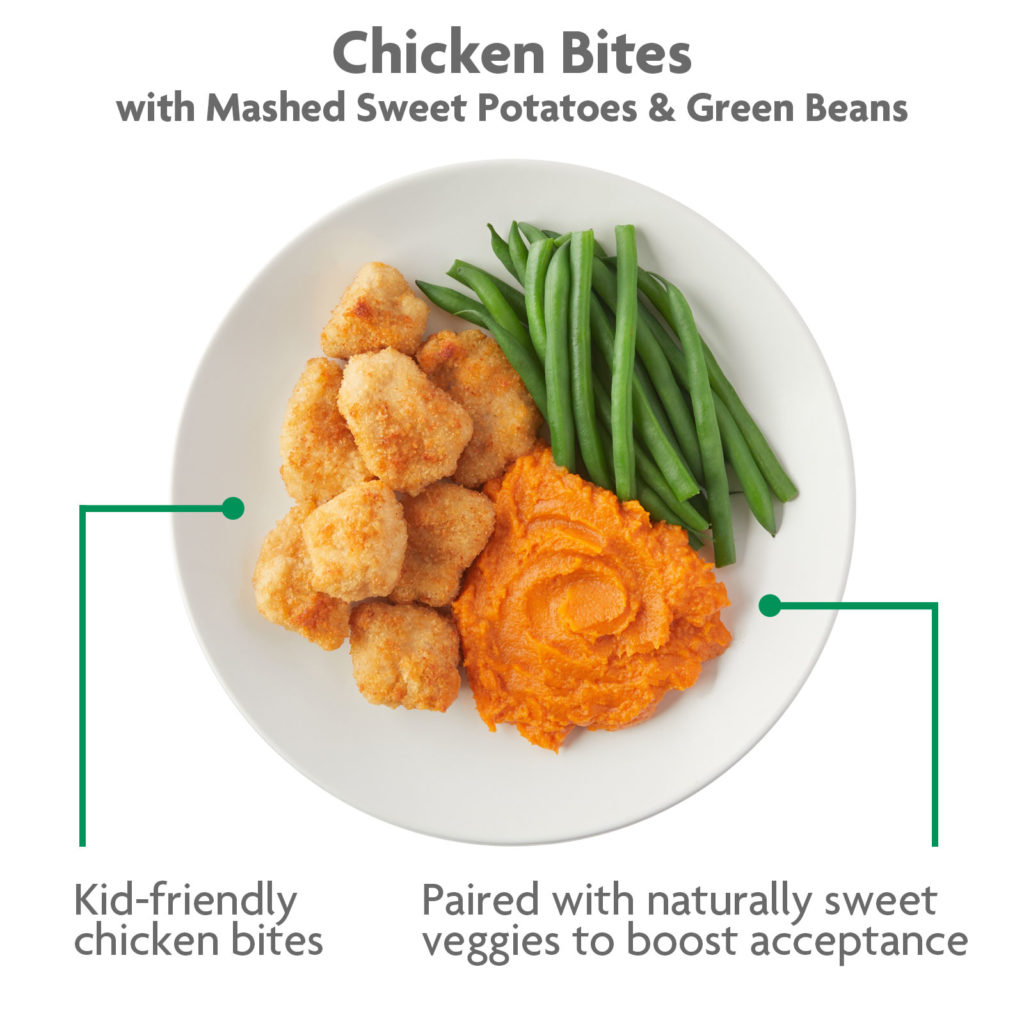
What’s Not In Nurture Life Meals
In terms of you and your kids’ health and wellbeing, what’s not in a meal can be just as important as what is. So instead of making only positive promises of macronutrient balance and a focus on organic produce, Nurture Life also wants to show you what is purposefully leave out of their meals.
Nurture Life Uses Salt and Sugar Intentionally
- Sugar: Nurture Life keeps added sugars as low as possible for every meal, with strict maximum amounts per meal: Toddler- max 8 g, Kid- max 11 g and Teen & Adult- max 16 g. (Our Stage 3 Baby Meals are even lower, at less than 1 g per meal.) Nurture Life never uses low-calorie sweeteners; instead we use (small amounts!) of ingredients like fruit purees, agave, honey and maple syrup. We focus on reducing added sugar while still promoting nutritious and flavorful combinations.
- Salt: While Nurture Life meals do contain some salt, we keep it in check! It’s part of their mission to incorporate a unique array of herbs and spices as the most forward-facing flavors, only using salt to enhance flavor that’s already there.
Nurture Life Never Add Preservatives
Real food shouldn’t last long on a shelf, and Nurture Life is committed to freshly made meals served at their peak of natural goodness.
Nurture Life’s “Never Evers”
- Nitrates/Nitrites (Sodium or Potassium Nitrate/Nitrite, Celery Powder)
- Potassium Bromate
- High Fructose Corn Syrup (HFCS)
- Partially hydrogenated oils (trans fats)
- Propylparaben
- Butylated Hydroxyanisole (BHA)
- Butylated Hydroxytoluene (BHT)
- Propyl Gallate
- Theobromine
- Artificial Flavors
- Synthetic Colors (F, D & C)
- Diacetyl
- Phosphate Food Additives
- Bisphenol-A (BPA)
- Carrageenan
By this point, we hope it’s clear just how much thought and work goes into every single Nurture Life meal. It might look like a simple plate of Mac & Cheese or a standard serving of Pot Roast, but it’s actually a recipe that’s been developed, balanced, tested, refined and finally approved by multiple nutrition experts.
Nurture Life’s registered dietitians to R&D chefs, quality assurance managers and taste testers, Nurture Life’s entire team is all united by the same goal: to give your family not just better, but the best meals available.
Editors Note: Nurture Life has offered TheBusyMomBlog readers 25% off by using code: KIDSMEAL25 at checkout.
The BusyMomBlog team writes about stuff we think you’ll like. BusyMomBlog has a relationship with advertisers, and sometimes receives products or a share of revenue from your purchase. All posts are for entertainment purposes.
